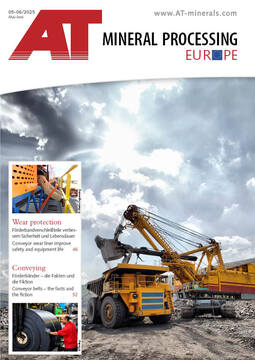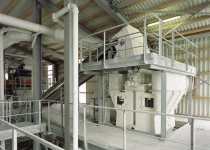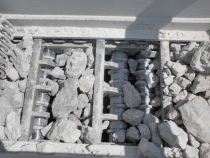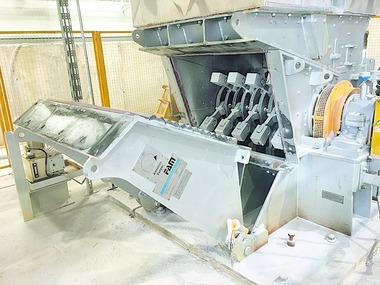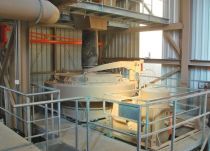Plant for the production of fine limestone granules with reduced filler content
1 Task
This describes a process for the secondary crushing of low-wear limestone to a maximum grain size of 8 mm with low filler content in a fine grain crusher, followed by classification, intermediate storage, and loading.
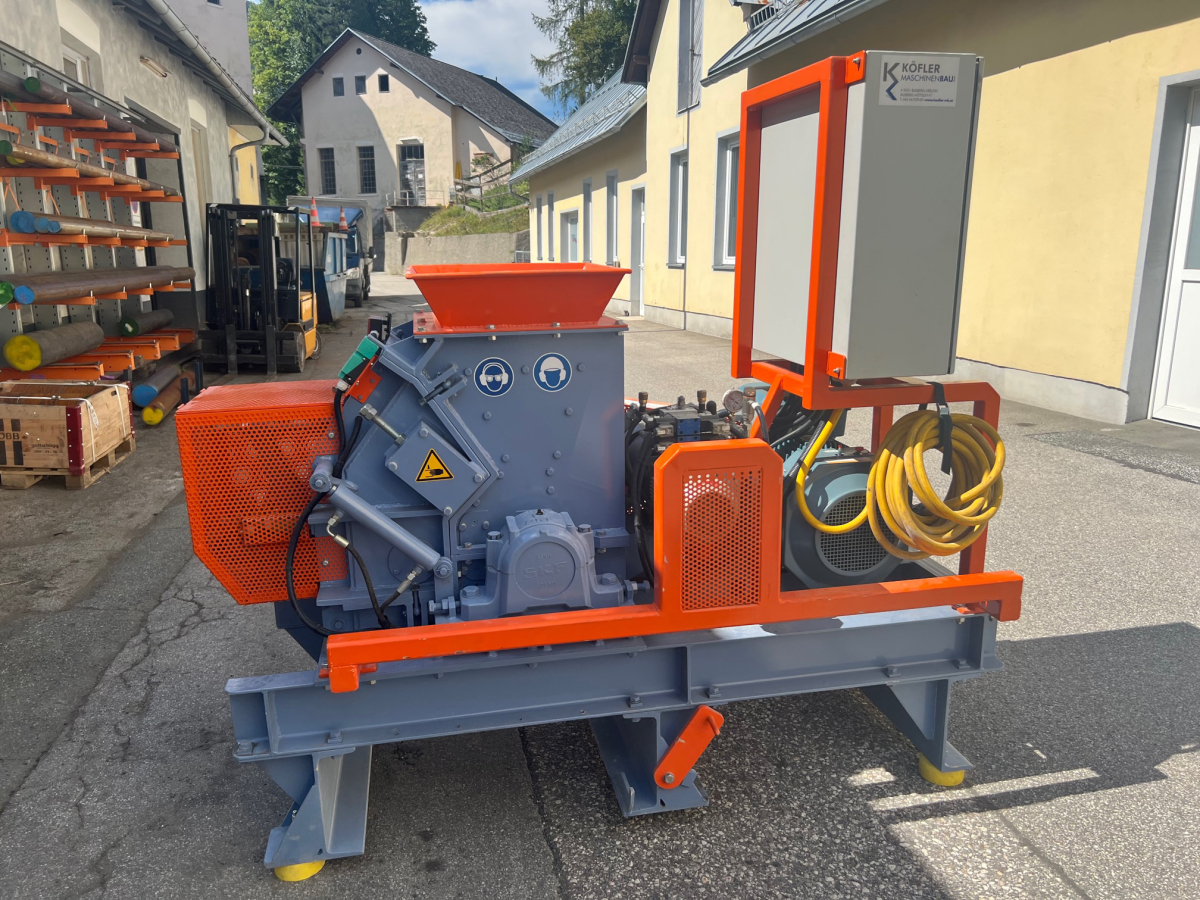 DC fine grain crusher from Köfler Maschinenbau GmbH
DC fine grain crusher from Köfler Maschinenbau GmbH
© Thomas Vörös
Feed material
The feed material usually consists of pre-crushed, low-wear rock, predominantly from Jurassic mass limestone or shell limestone deposits, largely free of non-mineral impurities, with a maximum moisture content of 0.5 % and a low filler content, otherwise any grain distribution from 1 to 4 mm. The proportion of abrasive impurities, such as quartz, must not exceed 1 to 2 % by weight in the limestone.
Finished product
The rock types mentioned above can be used to produce finished products with a cubic calibrated grain shape of 0.5 to 2 mm with max. 5 % ≤0.090 mm in accordance with a grinding curve that can be predetermined within certain limits. These are separated into individual grain groups as required using separators and screens and temporarily stored in silos.
2 Description of the DC fine grain crusher
The DC fine grain crusher is essentially a single-rotor roller crusher with a special design. The main difference to the classic roller crusher lies in the design of the roller rotor. This is systematically equipped with a large number of special, replaceable carbide splitting tools around its circumference. These grip the feed material, press it against the adjustable deflection swing while splitting it, which counteracts the formation of flat grains and achieves a high proportion of cubic grains.
3 System design for secondary crushing
The grain group intended for secondary comminution is continuously conveyed through a side outlet on the relevant silo via a power-controlled conveyor with metal detector to a special feed chute with an integrated, powerful and easily removable permanent magnet, and fed into the machine evenly distributed across the rotor width. The ground material is discharged into a collection shaft under the fine grain crusher with discharge screw and can then be classified via a screening and sieving system. In this way, fine grains that are virtually free of fillers can be produced.
The plant described is housed in a closed steel building with platforms, stairs, and the necessary auxiliary equipment. The steel building is placed on a silo group of at least four silos in order to provide sufficient storage space for the individual grain fractions and to obtain sufficient space for separators, screens, and dust extraction.
5 Mixing and loading
As a rule, the required grain classes are loaded directly from the relevant silo. However, it is possible to produce defined grain mixtures with medium mixing quality during loading using a volumetric mixing device. This is achieved by means of additional side outlets on the silos. The individual components are fed onto a mixing cone with a loading device via computer-controlled, speed-adjustable feed screws and then loaded into silo vehicles.
6 Control and regulation
The individual process sequences are coordinated and managed by a central measurement, control, and regulation system, including the control and regulation processes required for specific individual components. Special programs are provided for mixing recipes and loading processes.
7 Test machine
A machine for on-site testing can be provided at cost.
8 Summary
A process is presented for the efficient production of filler-reduced fine grains from high-quality limestone using a DC fine grain crusher from Köfler Maschinenbau GmbH, A-9500 Villach, . Process engineering consulting was provided by S2 Engineering, D-59909 Bestwig, .

